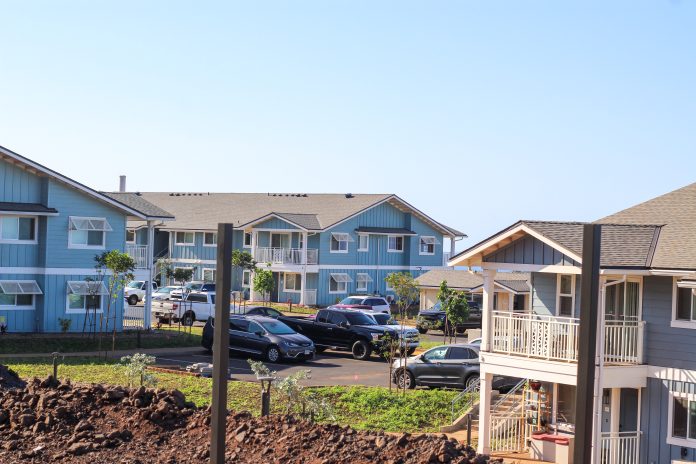By Yiming Fu, Report for America corps member
The plan to convert Maui’s vacation rentals into housing for locals has stalled at Maui County Council.
Mayor Richard Bissen continues to advocate for this transition to put locals first, despite a new report showing this idea may harm Maui’s tourism-dependent economy, cutting visitor spending by $900 million a year.
Vacation homes make up 21% of Maui’s housing stock, on an island where the high cost of living forces local families out. After the August 2023 wildfires, 12,000 people were displaced with many still struggling to find an affordable place to live.
“This phase-out is not anti-tourism—it is pro-resident,” Bissen said. “It aligns with our community plans, our zoning laws, and the clear, consistent message we’ve heard from the people of Maui: our residents must come first.”
The original proposal
Last May, Bissen proposed transitioning 7,000 vacation homes into resident housing in apartment-zoned areas by 2026. But it hasn’t made progress.
Maui County Council hasn’t even taken the bill, with Council Chair Alice Lee saying the council needs more information on the economic impact before making a decision.
The county could not agree on who would do an official economic analysis.
Economic challenges
However, the University of Hawaii at Manoa’s Economic Research Organization released its own report March 31, one of the first in-depth economic studies on the topic.
They found transitioning short term rentals to long term housing will increase available housing on Maui by more than 6,000 units, or ten years worth of developing. This could lower condo prices by 20 to 40%.
On the other hand, the report found this decision would reduce visitor accommodations by 25% and visitor days by 32%.
It would also cut visitor spending by $900 million each year, causing job loss, lower household incomes, economic activity and county tax revenues.
The UHERO study recommended many strategies to balance housing affordability with economic stability. Some alternatives could include higher property taxes on vacation rentals or an auction-based permit system.
If the county still hopes to transition all the vacation rentals to full-time housing, UHERO recommends a region-by-region rollout or lottery-style selection to make the economic transition easier.
People first
Bissen said the UHERO study is helpful to understand how transitioning vacation rentals will affect tax revenue, employment and visitor behavior on the island. But it cannot fully shape the future of Maui or reflect the lived experiences of Maui’s families who cannot afford a place to live on their own.
An economic model also fails “to acknowledge the cultural loss we face when our people are forced to leave—when generations of knowledge, tradition, and aloha are displaced from the very communities that shaped them,” Bissen said.
One in every four Native Hawaiians born in Hawaiʻi has moved away, Ka Wai Ola reports.
Across West Maui, fewer than half of the new homes built since 2010 house full-time residents, the Ka Wai Ola report finds. The homes also sell at 21 times higher than the typical kamaʻāina household earns in a year.
The main two affordable housing complexes in Lahaina, Lahaina Surf and Front Street Apartments, will not be done rebuilding until Summer 2029.
Bissen stressed that transitioning vacation rentals is not the only housing solution the county is looking at. He said the county is also exploring affordable housing programs, policy reforms, tax incentives, deed restrictions, expedited permitting, infrastructure investment, and new housing development.
“We welcome visitors,” Bissen said, “but not at the cost of displacing those who call Maui home. The cultural and social costs of inaction are too high. Protecting our people and preserving our quality of life is not just good policy—it’s a moral responsibility.”
AsAmNews is published by the non-profit, Asian American Media Inc.
We’re now on BlueSky. You can now keep up with the latest AAPI news there and on Instagram, TikTok, Facebook, YouTube and X.
We are supported by generous donations from our readers and by such charitable foundations as the Robert Wood Johnson Foundation.
You can make your tax-deductible donations here via credit card, debit card, Apple Pay, Google Pay, PayPal and Venmo. Stock donations and donations via DAFs are also welcomed.

